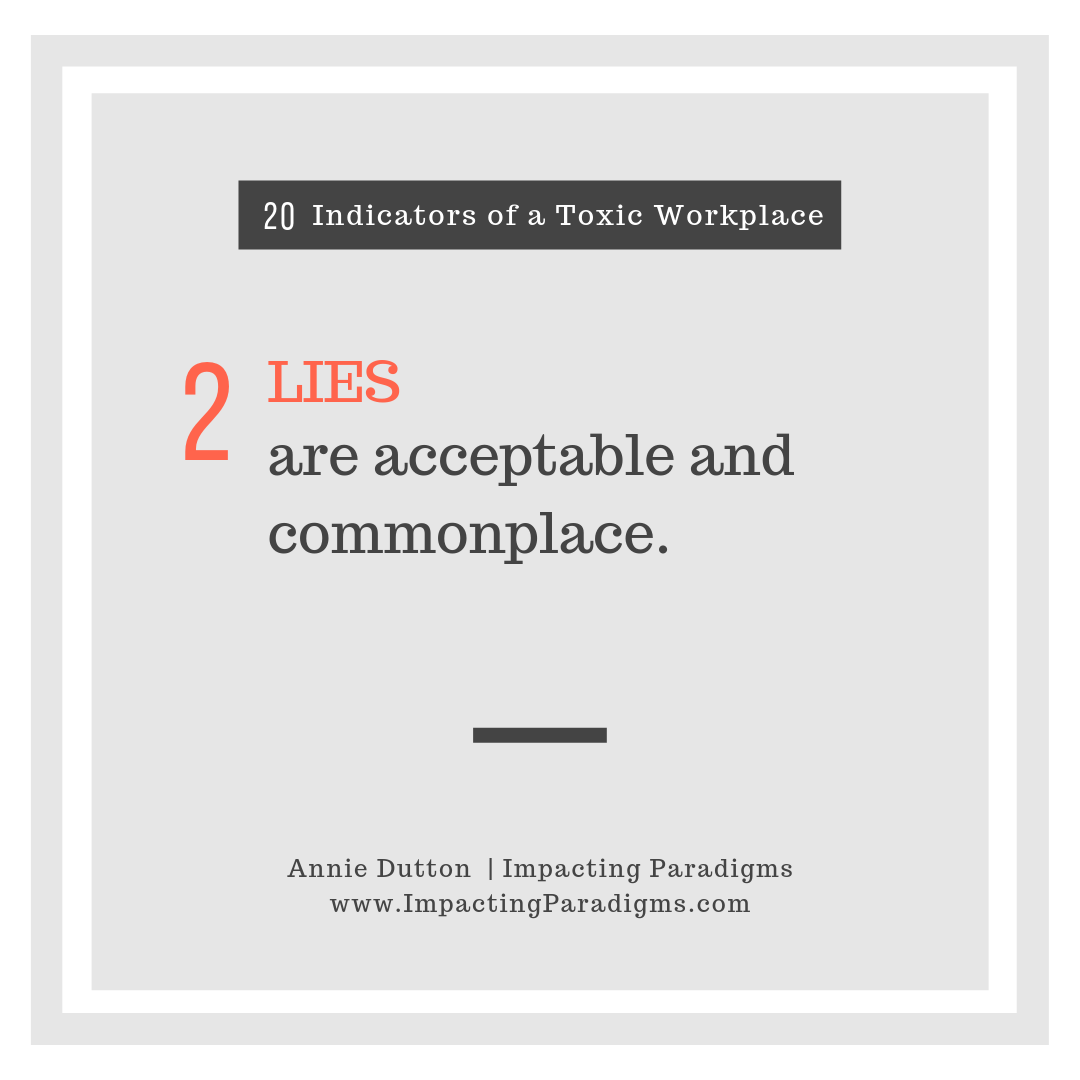People can be connectors. They can also be inhibitors. Highly politicized cultures revolve around personalities, what can or cannot be said, and to whom. It is wise to aware of context. When the context of most situations becomes hypersensitive, toxicity may have creeped into the culture. People, not content, become sensitive.
20 Indicators of a Toxic Workplace
Sometimes the demands placed on employees do not recognize boundaries. Employees feel that they will be penalized if they enforce their boundaries, family commitments (outside normal work hours), or ethical constraints. A symptom of this can include frequently receiving last minute requests at the end of a day.
20 Indicators of a Toxic Workplace
We live in a culture where progress at work often comes in the form of a “better job grade” or “title”. We get a sense of power and importance from these. Sometimes we “lord” it over those “below” us. A new title or job grade can be an indicator of growth – a stepping stone. However, too often subjective and arbitrary decision making is applied to giving these in inconsistent ways, which results in people being de-valued when they are “looked over”. We limit how many people can be assigned a particular job grade / title. Yet, we still tell everyone to “be a leader”. We just refuse to formally acknowledge that they are valued as a leader. And, sometimes create cultures where some “job grades” don’t associate or respond to “other job grades”. How is an employee supposed to reconcile this contradictory message?
20 Indicators of a Toxic Workplace
It sounds odd to identify lying as something that is common at some places of work. Withholding information, directing others down incorrect paths, “fudging” numbers / information, and playing multiple sides of a situation are all ways deception can happen at work. These actions erode trust. They also decrease service / product quality, which results in lower revenues.
20 Indicators of a Toxic Workplace
Micromanagement is an effective method when partnered with the appropriate activity. As a leadership style, it stifles creativity, erodes trust, and increases anxiety / fear. This can create a cycle because it can be used as a response to fear.
Conveying sensitive messages
When conveying sensitive messages, taking the time beforehand to acknowledge our own mixed feelings, disappointments, anger, and the root reasons for them can help ensure that when we do deliver these types of messages that our intent and our non-verbal signals are originating from integrity and sincerity.
Too often in my own past, I have not done this and realized later that my anger or irritation was not directed toward the person I was communicating with. In times, when I have taken the time to reflect, offenses toward others have been resolved - message delivery was more effective .
And, those unintended nuances were avoided.
Nuance
Nuance is defined as “a subtle difference in or shade of meaning, expression, or sound”. In terms of communication, this can be: body language, tone, double meanings, facial expressions, information deliberately excluded, eye contact (or lack thereof), or implications left to be interpreted by the receiver.
Congruency between our words and body language, tone, eye contact, and facial expressions will enforce the message. If there is a discrepancy between our words and these non-verbal signals, the receiver of our message may miss our message and our intent.
Silent Nuances
Visions of better
I tend to be a mix of an idealist and a realist. I see a vision of the how the world could be when every single person interacts from only their highest level of integrity and concern. Realistically, I know this is as likely as a purple striped elephant being born.
Yet, I believe that we all go further, achieve more, build better relationships, and exceed our expectations when we allow ourselves to meditate on ideal visions and dreams of what could be.
Building culture
“So goes the leader, so goes the organization.” - Unknown
I have recently spoken with individuals who are stepping away from a particular role because their leader(s) were toxic: demeaned people, did not keep their word, blamed others, and spread negative things about those at work. I’ve heard senior leaders say that because of having no other options, they have laterally moved or promoted people who have displayed this type of poor behavior.
So, how do you lead an organization where people arrive with a different set of values under which they operate?
The answer is simple but requires consistency (and patience): Make the values front and center, be passionately relentless in striving for them, and hold everyone to the same standard. Culture is built thru the behaviors consistently demonstrated and accepted by the leaders.







